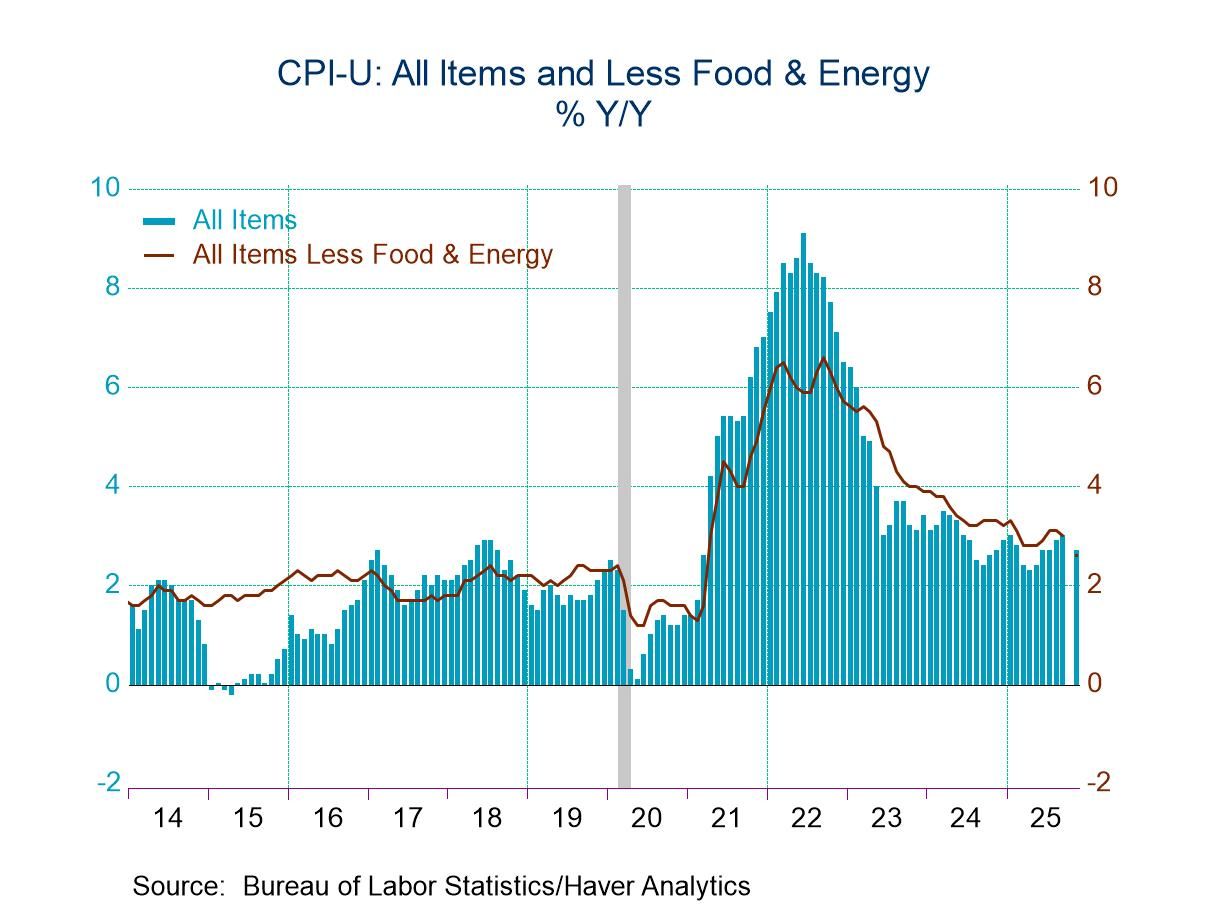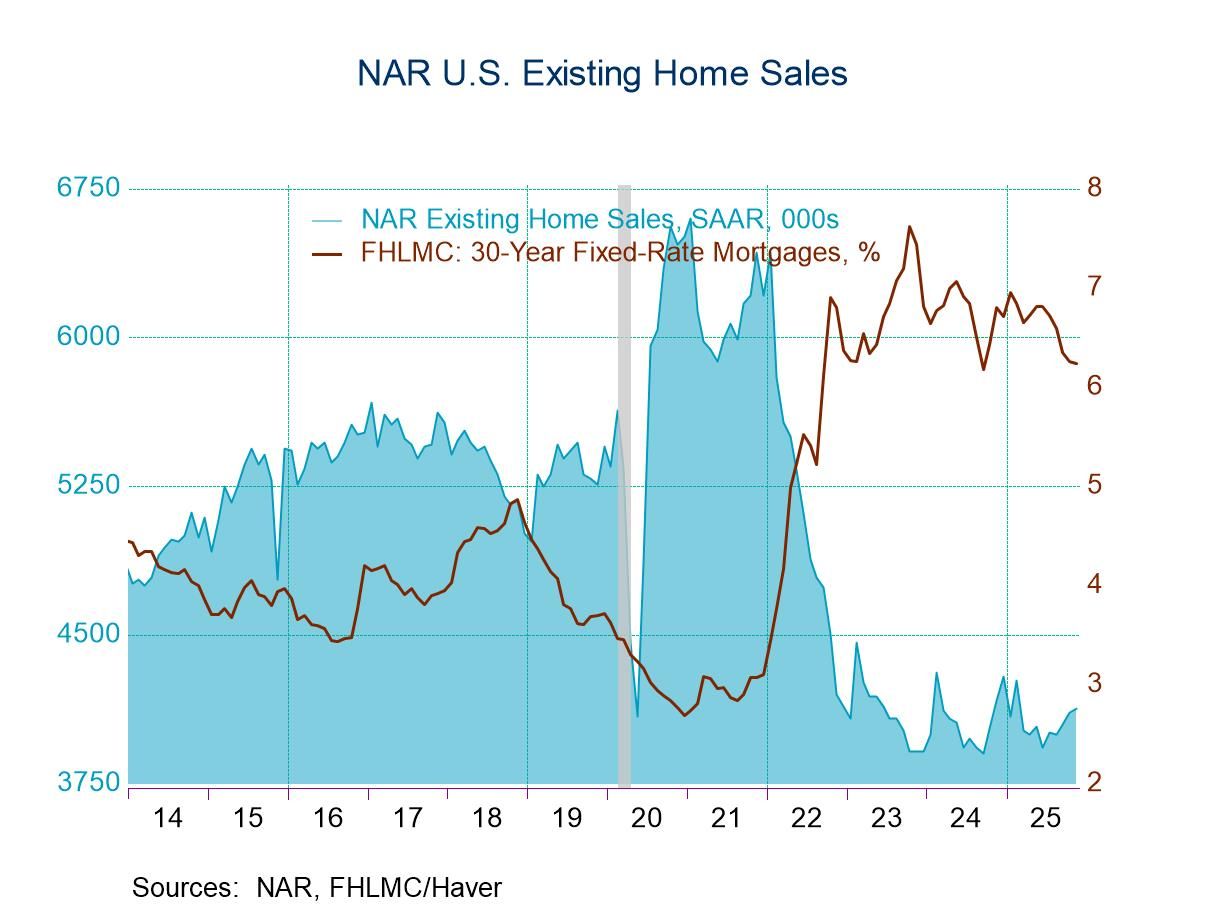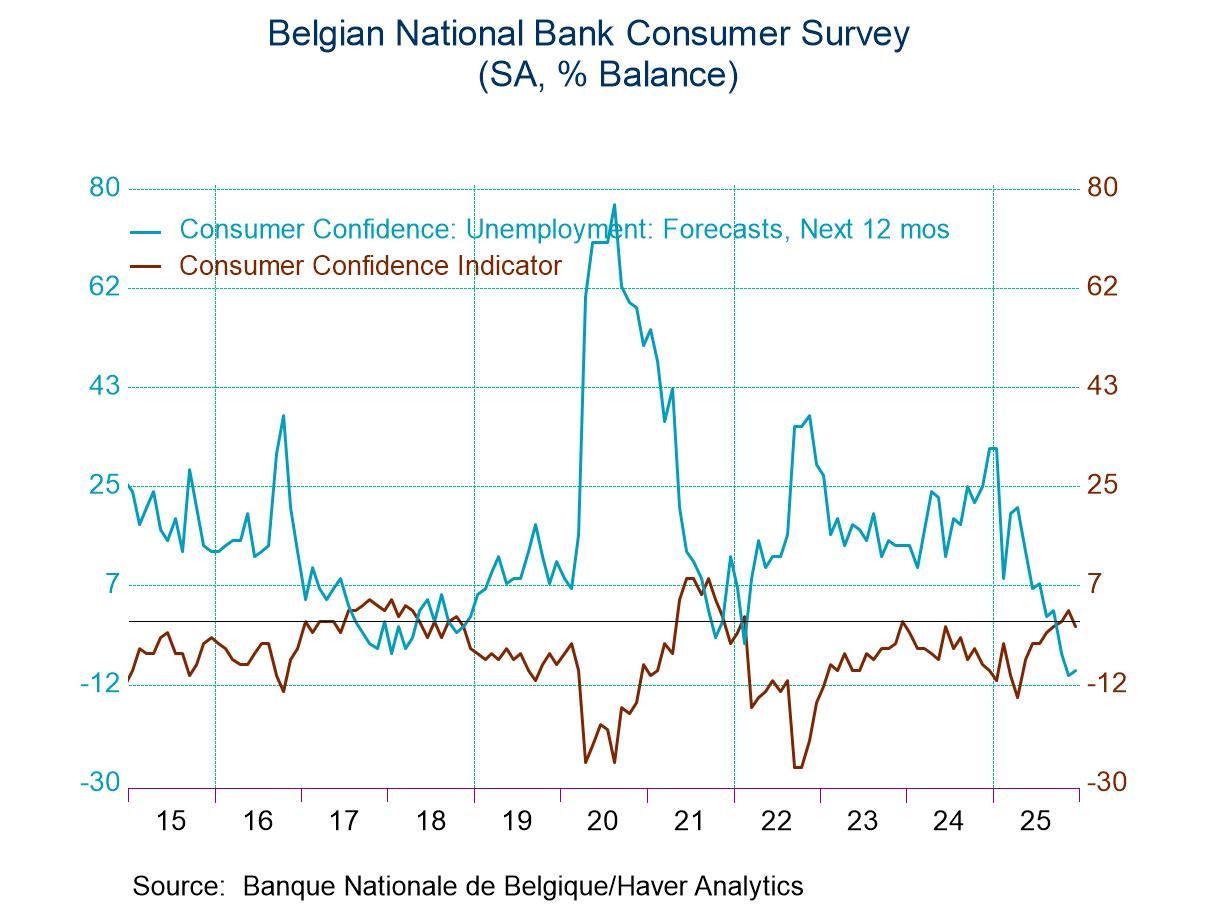EMU Growth Continues to Slow; Reverses Q3 Drop

GDP in the European Monetary Union in 2023 Q4 rose by 0.1% based on its early release. This small gain reverses the direction of GDP that fell by 0.5% in the third quarter of 2023. It helps to establish a positive growth rate over the last four quarters at 0.1%, after the third quarter posted a year-over-year GDP growth rate of zero.
EMU avoids year-on-year GDP losses- The European Monetary Union has avoided year-over-year declines in GDP since the first quarter of 2021. This early report is based in part on released data for seven monetary union members plus estimates. The four largest EMU economies: Germany, France, Italy, and Spain, posted a GDP gain, in the fourth quarter of 0.1% when grouped together. This is below the 0.3% gain they logged in the third quarter. These four countries provided a year-over-year GDP gain of 0.5%, up from 0.3% in the third quarter but lower than the previous two quarters. Based on this early data the rest of the monetary union -apart from these four countries - saw fourth quarter GDP rise by 0.3%, a reversal of their third quarter decline of 2.5% and it compares to a 0.1% quarter-to-quarter decline in the second quarter of 2023. The rest of the monetary union group’s GDP declined by 0.9% in the fourth quarter year-over-year the same as its year-over-year drop in the third quarter. These early and preliminary data demonstrate that the Big-4 economies in the monetary union are carrying the weight of pushing growth forward.
Optimism for global growth? However, none of this comes close to the U.S. where fourth quarter growth annualized GDP was up 3.3% after posting 4.9% in the third quarter. The U.S. GDP logs in at a 3.1% growth rate over four-quarters in 2023-Q4, up from 2.9% over four-quarters that was registered in the third quarter of 2023. The performance of the U.S. economy provides some backing and reason for optimism for the global economy looking ahead.
Percentile standings reveal a lot of under-performance- Additionally, we can evaluate the year-over-year GDP performance of the countries in the table by comparing current year-over-year growth to growth rates in the past. On this basis, the U.S. clearly has the strongest relative growth rate with the 75-percentile standing for its 3.1% growth rate. Portugal has a standing in its 64th percentile, above its historic median for the period (medians occur at the 50-percentiel mark). And Portugal is the only European Monetary Union member in the table with a GDP growth rate above its median. For the monetary union, the 0.1% growth in the fourth quarter has a 19.6 percentile standing. Among reporting members, the strongest standing (apart from Portugal) is Belgium with a 43.5 percentile standing, Italy with a 40.2 percentile standing, and Spain at a 38-percentile standing. The lowest standing is from Ireland with a 5.4 percentile standing; Germany has a 20-percentile standing and the French standing rounds to its 23rd percentile.

Tempered Optimism Growth in Europe is sluggish across the board and of course much weaker than we see in the U.S. However, there is some good news, and that is that none of the year-over-year growth rates for monetary union members in the fourth quarter are weaker than they were in the third quarter - all of them were either the same or higher. For example, for the Big-4 EMU economies, growth in the fourth quarter at 0.5% was up from 0.3% in the third quarter on a year-over-year basis. For the rest of the monetary union, growth at -0.9% was unchanged from the third quarter on a year-over-year basis. Each of the individual countries reporting in the table shows a higher growth rate in the fourth quarter than the third quarter although for several the margins are very slim. For example, for the monetary union the step up from the Q3 growth rate is only 0.1%, for Belgium it's only 0.1%, for France it's only 0.1%, for Germany it's only 0.1%, and for Spain it's only 0.1%. The margins for improvement are narrow indeed - margins on year-over-year growth rates. So those improvements are small, but still reason to hope that an improving trend is now in the works. The early release of European GDP for the fourth quarter of 2023 provides a small dollop of optimism. With inflation tailing and less aggressive behavior from the EMU likely, growth stands a better chance of keeping and expanding on this gains.
Robert Brusca
AuthorMore in Author Profile »Robert A. Brusca is Chief Economist of Fact and Opinion Economics, a consulting firm he founded in Manhattan. He has been an economist on Wall Street for over 25 years. He has visited central banking and large institutional clients in over 30 countries in his career as an economist. Mr. Brusca was a Divisional Research Chief at the Federal Reserve Bank of NY (Chief of the International Financial markets Division), a Fed Watcher at Irving Trust and Chief Economist at Nikko Securities International. He is widely quoted and appears in various media. Mr. Brusca holds an MA and Ph.D. in economics from Michigan State University and a BA in Economics from the University of Michigan. His research pursues his strong interests in non aligned policy economics as well as international economics. FAO Economics’ research targets investors to assist them in making better investment decisions in stocks, bonds and in a variety of international assets. The company does not manage money and has no conflicts in giving economic advice.






